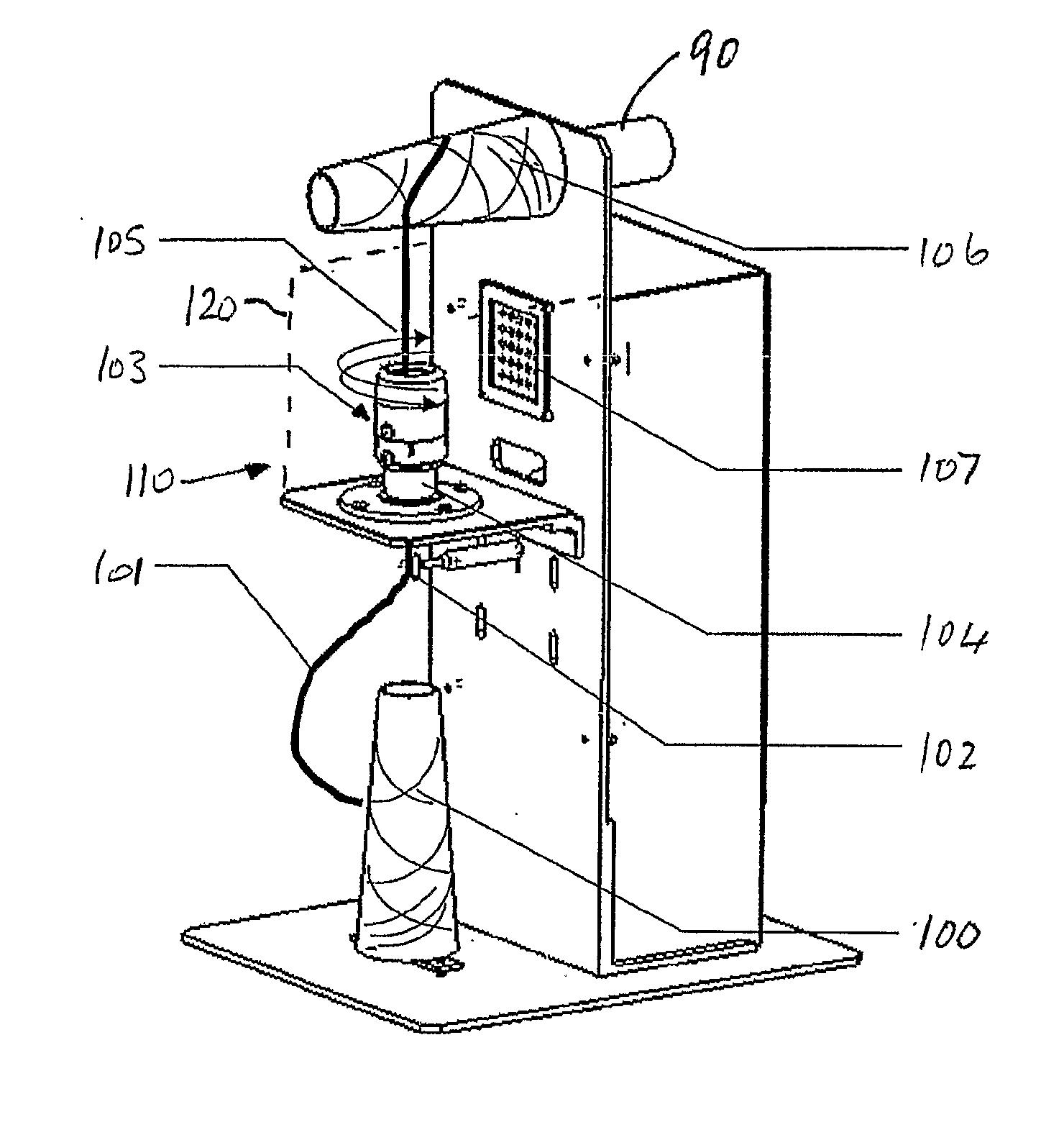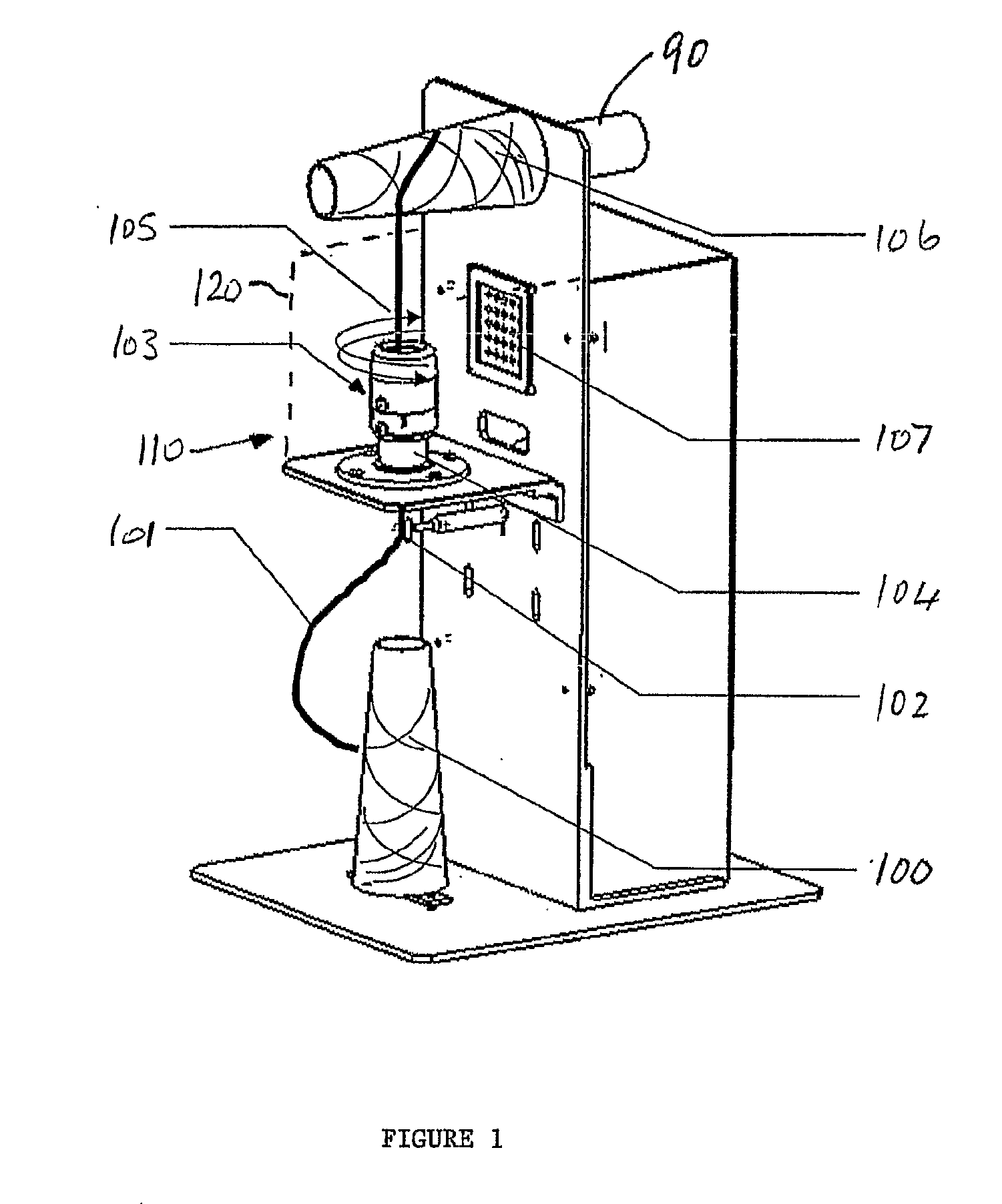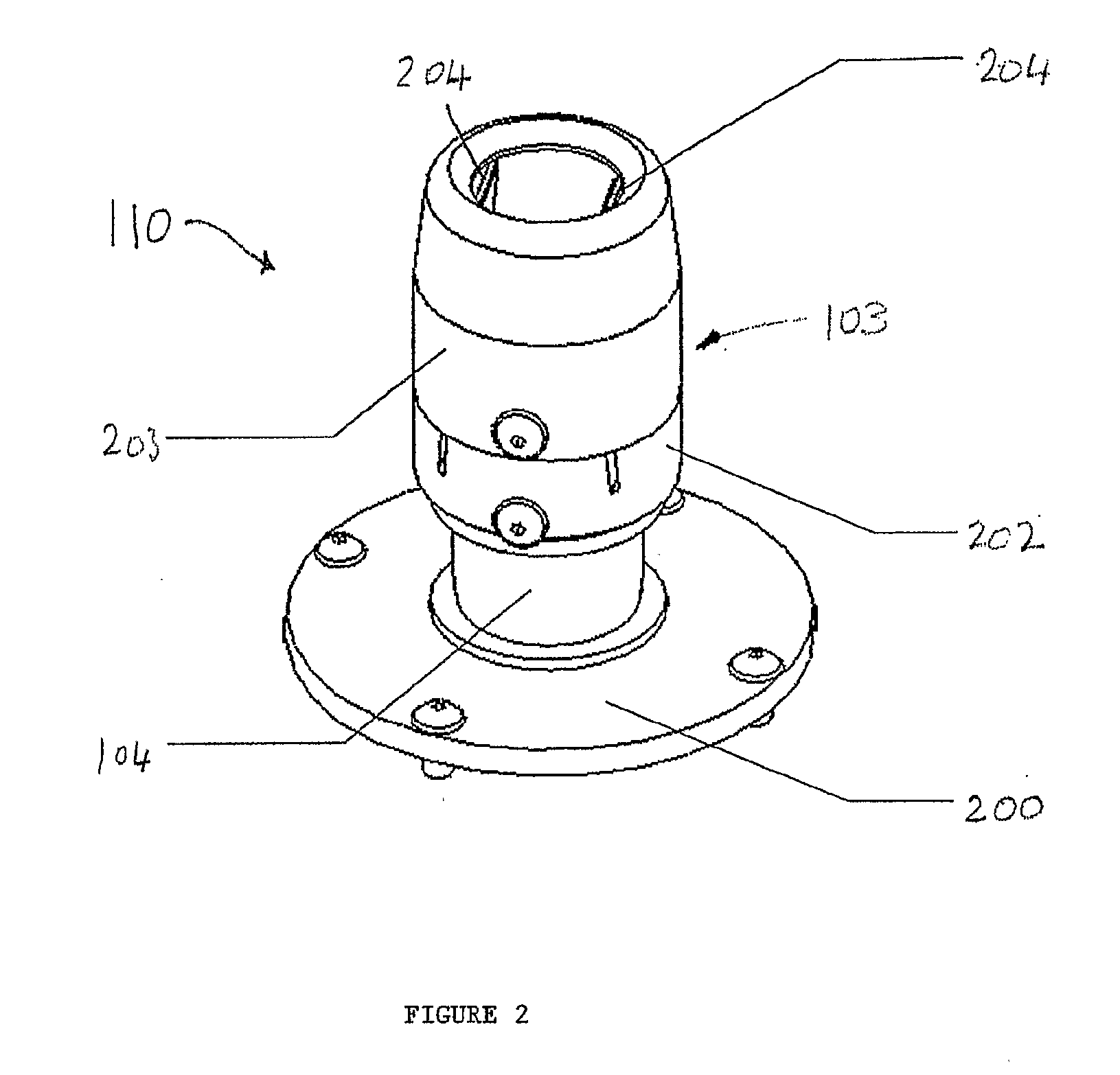Nanofibre yarns
a technology of nanotubes and yarns, applied in the field of nanofibre yarns, can solve the problems of inhibiting the properties of composite materials, lack of a method of assembling trillions of nanotubes into macro-sized items, and increasing the viscosity of fluids, so as to achieve high electrical and thermal conductivity, enhanced toughness, and high field emission
- Summary
- Abstract
- Description
- Claims
- Application Information
AI Technical Summary
Benefits of technology
Problems solved by technology
Method used
Image
Examples
Embodiment Construction
[0029]Preferred nanofibre sources for producing core-spun yarns according to the invention with the illustrated apparatus configurations are nanofibre forests with the special property of drawability, by which is meant the tendency of the nanofibres to form continuous strands or ribbon-like assemblies. When a forest is produced with this property, if nanofibres at the edge of the forest are pulled away laterally of the orientation of the nanofibres, i.e. generally parallel to the plane of the substrate supporting the forest, they ‘recruit’ the next layer of nanotubes and so on. If this process continues indefinitely, a ribbon is formed comprising a continuous assembly of linked nanotubes that has some unusual and useful properties, which include electrical and thermal conductivity, and high specific tensile strength. Moreover, because the ribbon is only about 20 μm thick in its undensified form, it is transparent. The process is disclosed and illustrated in the abovementioned intern...
PUM
| Property | Measurement | Unit |
|---|---|---|
| diameters | aaaaa | aaaaa |
| diameters | aaaaa | aaaaa |
| mechanical strength | aaaaa | aaaaa |
Abstract
Description
Claims
Application Information
 Login to View More
Login to View More - R&D
- Intellectual Property
- Life Sciences
- Materials
- Tech Scout
- Unparalleled Data Quality
- Higher Quality Content
- 60% Fewer Hallucinations
Browse by: Latest US Patents, China's latest patents, Technical Efficacy Thesaurus, Application Domain, Technology Topic, Popular Technical Reports.
© 2025 PatSnap. All rights reserved.Legal|Privacy policy|Modern Slavery Act Transparency Statement|Sitemap|About US| Contact US: help@patsnap.com



